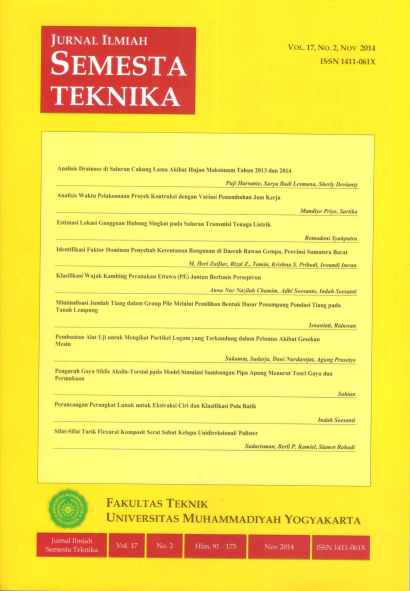Klasifikasi Wajah Kambing Peranakan Ettawa (PE) Jantan Berbasis Perseptron
DOI:
https://doi.org/10.18196/st.v17i2.420Abstract
Goat Peranakan Ettawa ( PE ) is a kind of superior goat derived from goat crosses, between Ettawa (Jamnapari ) from India and Kambing Kacang (Bean Goat) from Java. A factor to determine quality of goat PE is it’s face. More than 30 cm ears length and the head color is black represents good quality. More better the quality of goat face, means higher selling price. In this study, male goat face is classified into class good quality, less good, and not good at data such as photo / image In the market, classification done by visual observation, so many farmers have difficulty in classifying the face of a goat. For that purpose, a system is needed that capable for classifying a goat face to facilitate farmers in classifying.This classification system uses Perceptron Method, is a method of guided learning using characteristic as input those are ears length, black value and brown face value. Images are used as training images as much as 9 images, and test images are 20 images. This system could classificating PE goat face with success rate of 95% and 1 error from 20 testing images. Error occured because the background was detected as black and image taking that not precise.Downloads
Published
2015-11-26
How to Cite
Chamim, A. N. N., Soesanto, A., & Soesanti, I. (2015). Klasifikasi Wajah Kambing Peranakan Ettawa (PE) Jantan Berbasis Perseptron. Semesta Teknika, 17(2), 126–136. https://doi.org/10.18196/st.v17i2.420
Issue
Section
Articles
License
Semesta Teknika is licensed under a Creative Commons Attribution 4.0 International License.
Authors who publish with this journal agree to the following terms:
- Authors retain copyright and grant the journal right of first publication with the work simultaneously licensed under a Creative Commons Attribution License that allows others to share the work with an acknowledgement of the work's authorship and initial publication in this journal.
- Authors are able to enter into separate, additional contractual arrangements for the non-exclusive distribution of the journal's published version of the work (e.g., post it to an institutional repository or publish it in a book), with an acknowledgement of its initial publication in this journal.
- Authors are permitted and encouraged to post their work online (e.g., in institutional repositories or on their website) prior to and during the submission process, as it can lead to productive exchanges, as well as earlier and greater citation of published work (See The Effect of Open Access).









